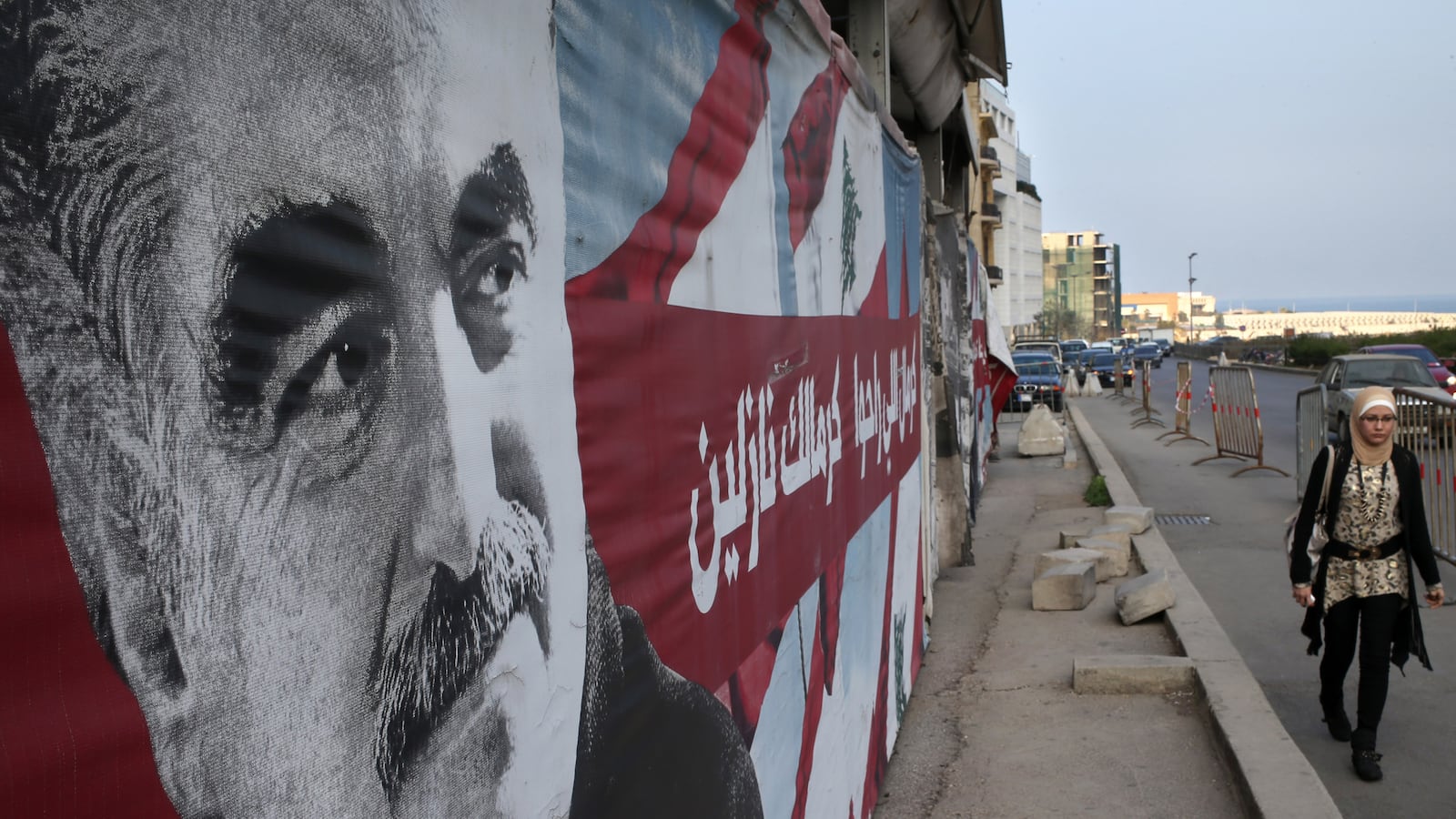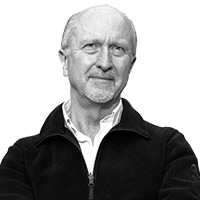A bizarre trial began today for those accused of the horrific bombing in Beirut that killed former Lebanese Prime Minister Rafik Hariri nine years ago. The venue is at The Hague in The Netherlands. The accused are not in the dock, or even in custody. The suspected masterminds, members of the Assad gang that runs Syria and their allies in Tehran, are not named. But the courtroom is full of ghosts.
The indictments of five men linked to Lebanon’s Hezbollah position them right in the middle of a gruesome timeline that stretches back to the bombing of the U.S. embassy and the U.S. Marine Barracks in Beirut in 1983 and continues in an almost seamless 30-year narrative of carnage. Along the way Americans were taken hostage and held for years or, in the case of CIA station chief William Francis Buckley, tortured to death. Politicians, publishers and commentators were blown away. The most recent incident was the car-bomb murder of prominent Lebanese moderate Mohamad Chatah and several innocent bystanders in the affluent heart of Beirut less than a month ago.
The existence of the United Nations’ Special Tribunal at The Hague is proof, in itself, that Lebanon still lives by the rule of the gun—and the bomb—not the rule of law. Nobody dared to hold this trial there.
That Syria and Iran, their agents and their local allies are behind these many killings, nobody in Lebanon doubts, least of all those who try to fabricate other theories. But, as with any effort to prosecute hit-men who work for organized crime (which is the way the Assad regime operates), it’s difficult for prosecutors to find proof, and harder still to keep witnesses alive, even the “made men” at the top.
A few months after the Saint Valentine’s Day Massacre that killed Hariri along with 21 other people on February 14, 2005, U.N. investigators interviewed Syrian Interior Minister Ghazi Kanaan. He had served for years as the Assads’ loyal—and quite ruthless—proconsul in Beirut. But it seems his bosses no longer had confidence in him. In October 2005, a few weeks after his interview, Kanaan committed suicide in his office. By some accounts he used more than one bullet to get the job done.
By then, the situation in Lebanon seemed to be getting out of Syria’s control. In the immediate aftermath of Hariri’s murder, a million or more Lebanese had taken to the streets to demand that Syria withdraw its troops from the country they had occupied, in one form or another, for two decades. And so they did.
But the Syrian soldiers never were the most effective tentacles of Syrian power in Lebanon. Syrian President Hafez Assad, and then his son Bashar Assad, used their spies and assassins to work their will before, during, and after their military occupation. In the months after Syrian troops withdrew, at least nine Lebanese critics of the Assads were blown away.
Given this background of calculated savagery in Lebanon, it’s not surprising that Bashar thought he could use similar tactics to keep himself in power when protestors started taking to the streets all over Syria in the spring of 2011. But in his own country Bashar’s murderous regime, as we know, begat a murderous opposition, and a civil war with no end in sight.
So now in The Hague, there is at least a chance to start setting the record straight. Even as another massive bomb went off in Lebanon today, this one targeting Hezbollah in a now-familiar tit-for-tat game of terror, prosecutors in the quiet Dutch courtroom started presenting their case to the judges robed in red and black. Before them was a miniaturized model of central Beirut—or, rather, two models. One showed the city as it was before the bomb, the other depicted it right after, with tiny burned-out cars and a thick layer of dust over the buildings scorched by the blast.
“The people of Lebanon have the right to have this trial,” said prosecutor Norman Farrell in his opening statement. “It will require detailed evidence. The truth leaves behind its traces.”
The case pieced together over the last nine years focuses on Mustafa Amine Badreddine as the operational mastermind, and the indictment identifies him clearly as a terrorist, a.k.a. Elias Fouad Saab, who organized suicide attacks on the American and French embassies and other targets in Kuwait in 1983.
Badreddine a.k.a. Saab was caught and sentenced to death by Kuwaiti authorities in 1984, but not executed. Over the next six years Badreddine’s cousin, Imad Mugniyeh, who was also his brother-in-law, plotted a rampage of kidnappings and hijackings in Lebanon and throughout the Middle East aimed at freeing Badreddine and 16 other suspects. In the process, Mugniyeh became the most infamous terrorist of his time. Among his victims: Buckley, AP correspondent Terry Anderson and erstwhile hostage negotiator who became a hostage, Terry Waite.
The Kuwaitis refused to bend, and the demands of the kidnapers grew more complex as Mugniyeh’s backers in Iran and Syria began to impose their own agendas.
In the mid-1980s, desperate to free Buckley and the others, the Reagan administration entered a dialogue with the regime of Iranian Ayatollah Ruhollah Khomeini, which was locked in a ferocious war with Iraq’s Saddam Hussein. The United States agreed to sell some vital weapons systems to the mullahs in exchange for their “help” freeing hostages, which they started to do one at a time, and never quite as agreed. The proceeds from the arms sales then went, under the table, to fund guerrillas, known as Contras, who were waging war on the leftist Sandinista regime in Nicaragua half a world away. Thus began the scandal known as “Iran-Contra” that shook the Reagan administration to its foundations, and Badreddine/Saab, in jail in Kuwait, was at the center of it.
Ironically, he and the other prisoners escaped when their sworn enemy Saddam invaded Kuwait in 1990. Only after that were Anderson and the other longest-held hostages in Lebanon finally released.
Someone, probably the Israelis, tracked down the infamous Mugniyeh and killed him with a neatly targeted explosive device that hit him in his car in Damascus in 2008. But Badreddine remains at large, and is considered a master bomb maker as well as a skilled planner.
The court documents released thus far in The Hague say that mobile phone records show Badreddine was in regular contact with the men accused of actually carrying out the attack on Hariri. But as the prosecutors presented their case today, they made it clear they were weaving a narrative of conspiracy that will take a long time to present. Phone records are being parsed line by line, number by number in a trial that could last a year. So the judges adjusted their robes as they settled in for the first of many long days, and every so often they looked down at the model of a city destroyed.
Will Badreddine ever be captured and brought to justice? Probably not. But for once, perhaps, truth will have left behind its traces.







